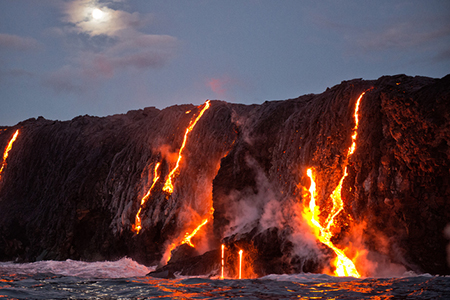(TNS)—If you live in an area of Hawaii that’s been impacted by the Kilauea volcano eruption, your mortgage lender may offer you relief. The eruption has destroyed 26 homes (at press time), and more homes are still at risk.
Wells Fargo and Bank of Hawaii have implemented disaster relief policies for those affected by Kilauea. If your home was destroyed or damaged by the eruption, call your mortgage lender to see if it’s offering assistance.
Wells Fargo will postpone payments for up to 90 days when the customer contacts them to discuss their situation.
“During this time, all negative credit bureau reporting, late fees, collection calls, and foreclosure referrals and sales are also suspended,” says Paul Gomez, vice president of Corporate Communications at Wells Fargo.
Bank of Hawaii offers a grace period for borrowers who either can’t make their mortgage payments or are facing foreclosure.
“We are definitely suspending foreclosures and evictions during this time of hardship, says Stafford Kiguchi, media representative for Bank of Hawaii. “The initial period of time is for the length of the emergency loan program, which is six months for forbearance; however, we will work with each borrower to suspend foreclosure for as long as it takes to recover their repayment capacity. If the hardship turns out to be more than a temporary situation, we have other, long-term relief programs, such as our loan modification program, which permanently lowers a borrower’s monthly payment.”
Bank of Hawaii is also making cash accessible for people in need through special loan programs. Some features include low interest rates; deferred payments for the first three months; fast approval; reduced payments, with loan terms up to 60 months; and loan amounts up to $25,000.
Qualified borrowers can use funds for:
- Emergency supplies and living essentials
- Home or vehicle repairs or replacement
- Bridging working capital needs
Bank of Hawaii customers may also be eligible to receiving forbearance and extensions on loans.
When homes are damaged or destroyed by fire, even if lava flow causes it, standard homeowners insurance policies should cover the damage, says Kirk Christman, principal at the ACW Group, headquartered in Hawaii.
Standard homeowners insurance policies are usually “all risk” policies, which cover any risk except for specifically excluded perils. Excluded risks typically include events such as earthquakes, hurricanes, tsunamis and floods.
“Because most of the damage is caused by fire due to the heat from the lava, homeowners should be able to file a fire claim, which is normally covered in most policies,” Christman says.
Be sure to turn in your claim to your insurance company and let them determine coverage.
If your lender is not proactively offering forbearance or other help, you can go directly to the websites of the Federal Housing Finance Agency or the U.S. Department of Housing and Urban Development to see what type of relief you might be eligible for, and then bring it up to your lender. You also can use these sites to find the name of the lender that owns your mortgage and where to go if the company doesn’t cooperate.
Just because a lender provides “relief” does not mean it’s forgiving you for any of the mortgage debt you owe. Even with the forbearance programs backed by the government, the amount that is deferred will be owed down the road.
Be cautious of calls from people claiming to offer mortgage relief on behalf of a government agency or asking for fees upfront for a loan or service.
When talking with the lender, ask for written confirmation and contact information in case you have any follow-up questions or concerns.
©2018 Bankrate.com
Distributed by Tribune Content Agency, LLC
For the latest real estate news and trends, bookmark RISMedia.com.











